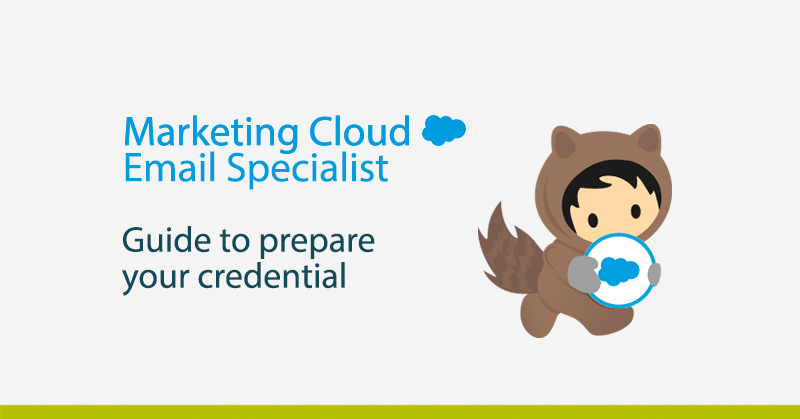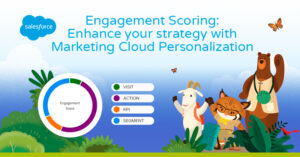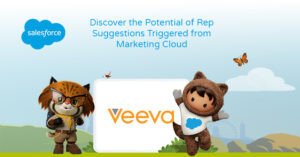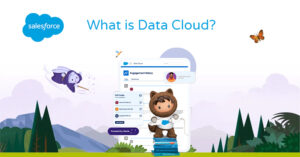In relation to the topic I already mentioned in this post about Salesforce Certifications, I’m going to try to solve your doubts about how to take the exam for Cloud Email Marketing Specialist.
First things first: there are four exams to obtain the complete Cloud Marketing Certification:
- Cloud Marketing Manager: Designed for administrators who can set up cloud marketing products using industry and product best practices. Candidates should generally be familiar with the data structure in subscriber data management and can navigate the Setup. Certified Cloud Marketing administrators can successfully resolve account settings and user requests.
- Cloud Email Marketing Specialist: designed for those who can demonstrate knowledge, skills and experience in email marketing best practices. Includes message design, subscriber and data management, inbox delivery, and external integrations with the Email Marketing Cloud application.
- Cloud Marketing Developer: Certified Cloud Marketing developers have hands-on experience developing across the platform. They create dynamic, personalized messages and landing pages, and are proficient in the Cloud Marketing scripting languages. They also have experience in advanced segmentation, reporting and analysis, and data configuration.
- Cloud Marketing Consultant: Designed for those who can configure and deploy Salesforce Marketing Cloud application tools, providing solutions for running tactical and strategic email campaigns. Candidates must have extensive knowledge of Salesforce applications, set up and regularly manage Salesforce, and work with stakeholders to define requirements
Who it is aimed at
The Salesforce Marketing Cloud Email Specialist credential is geared toward individuals who want to demonstrate their expertise in email marketing best practices, message design, subscriber and data management, inbox delivery, email automation, and tracking and reporting metrics within the Marketing Cloud Email application.
About the exam
Now I’m going to explain the general idea of how the exam is.
- Content: 60 multiple choice questions
- Time allocated to complete the exam: 105 minutes
- Score to pass: 68%
- Language: English
- Registration fee: USD 200, plus applicable taxes as required by local law
- Recovery fee: USD 100, plus applicable taxes as required by local law
- Delivery options: supervised exam delivered on-site at a test center or in an online supervised environment.
- Prerequisite: There are no prerequisites for this exam, however, I recommend that you complete the recommended Trailhead path provided by Salesforce as a practice before completing this exam.
Examination Outline
First of all, to start preparing for the exam we should visit the home page of the exams. Here you will find the basic information about the exam, the registration form and of course the study guide, all completely free of charge. You will also have access to support modules that reflect the points of the study guide, each section includes E-Learning modules, knowledge base articles (support information) and videos (mini videos to support learning). The E-learning modules are definitely a prerequisite for taking the exam and cover almost everything, the videos and the knowledge base articles are excellent for clarifying any questions we may not have understood. I would also recommend that you write notes while watching the videos to refer to them later.
In this structure of the exam, we should familiarize ourselves with each point of the topics to be covered and the weight of each one. The greater the weight, the more questions will usually be asked.
- Email Marketing Best Practices: 15%
- Email Message Design: 13%
- Content Creation and Delivery: 18%
- Marketing Automation: 19%
- Subscriber and Data Management: 28%
- Tracking and Reporting: 7%
SUBSCRIBER AND DATA MANAGEMENT – 28%
- Given the desired output requirements, set up Subscriber Lists and Data Extensions in the Marketing Cloud.
- Given a customer’s business requirements, determine how to import data into the Marketing Cloud according to best practices.
- Given a client’s business requirements, configure the segmentation tools to accurately model subscribers and data.
- Given a customer scenario, recommend the marketing unsubscribe subscription management solution that meets the requirements based on frequency, permission and customer preferences.
MARKETING AUTOMATION – 19%
- In a customer scenario, recommend the appropriate marketing automation solution.
- Given a scenario for managing customer data, set up the appropriate marketing automation tools.
CONTENT CREATION AND DELIVERY – 18%
- In a scenario, create and customize an email message to meet a customer’s needs.
- Given a scenario, send and implement an email campaign to meet the customer’s requirements.
- Given a scenario, know how to manage the content needed to implement a customer’s email campaign.
- Describe various sending capabilities in the email application.
- Send an e-mail (tools and definitions)
EMAIL MARKETING BEST PRACTICES – 15%
- Given a customer scenario, evaluate email marketing elements and techniques to design an effective email campaign.
- Given a customer scenario, recognize situations where legal compliance may be an issue during an email campaign.
- Given a customer scenario, differentiate elements of an email that can affect the ability to deliver the message.
- Given a customer scenario, demonstrate appropriate and effective subscriber acquisition methodologies
- Given a customer scenario, apply best practices for communication with a population.
EMAIL MESSAGE DESIGN – 13%
- Given a customer scenario, recommend email design best practices to implement.
- Given the desired output functionality, recommend methods for creating incoming emails.
- Given the desired output requirements, recommend strategies for testing A/B email elements.
- Given the desired delivery process, recommend using the Cloud Marketing tools when preparing an email to send.
- Given an email design, determine the correct use of approvals.
TRACKING AND REPORTING – 6%
- Given a customer scenario, explain the different metrics available for email campaigns and what each one means.
- Email Studio Tracking (general description)
- Given an email campaign, describe the steps needed to analyze performance results.
- Given the need to run reports, configure and run Cloud Marketing ad hoc and automated reports.
- Reports (general description)
Tips
- Cloud marketing is a complex platform, do not try to cover everything at once, focus on what the test asks for
- When you take a test, first try to eliminate incorrect answers to make sure you are confident with each answer
- Do all the Trailhead modules related to Cloud Marketing while taking notes to help you memorize and learn.
- Read their posts on the Salesforce blog to stay up to date
Other credentials
I would also recommend that you consider getting certified on these credentials which I believe are important to get started and will add value to your resume:






